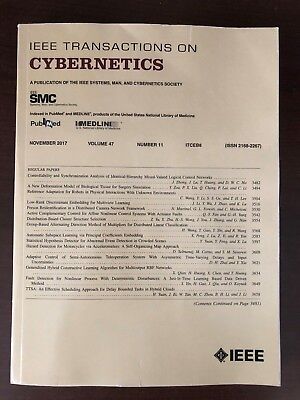混沌未知环境下的自动履带车辆:一种网络集论后退地平线控制策略。
IF 10.5
1区 计算机科学
Q1 AUTOMATION & CONTROL SYSTEMS
引用次数: 0
摘要
研究了自主机器人在未知杂乱环境下的约束导航问题。特别是在线运行时,需要保证路径规划和控制单元的安全性。这种说法产生了一个网络控制框架,其关键方面是通过诉诸集合论方法中开发的模型预测控制技术来解决的。特别地,设想了一种新的控制体系结构,其主要特征可以概括如下:尽管在通信介质中发生了时间引起的时间延迟,但仍具有抗碰撞能力;任务完成,尽管不可预测的障碍发生沿名义路径。在不考虑飞行器不确定性的情况下,正式证明了这些性质以及最终一致有界性和约束的实现。特别是,SSTMR被认为具有灵活性和适应性,可以在危险任务的艰苦情况下运作。最后的实验证明了该控制体系结构的有效性,并突出了该控制体系结构的主要优点。本文章由计算机程序翻译,如有差异,请以英文原文为准。
Autonomous Tracked Vehicles Operating in Cluttered and Unknown Environments: A Networked Set-Theoretic Receding Horizon Control Strategy.
In this article, the constrained navigation problem for autonomous robots moving in unknown cluttered environments is considered. In particular, it is required to ensure the safety of the path planning and control units during the on-line operations. This statement gives rise to a networked control framework whose the key critical aspects are addressed by resorting to model predictive control technicalities developed within a set-theoretic approach. In particular, a novel control architecture is conceived whose the main features can be summarized as follows: anti-collision capabilities despite time-induced time-delay occurrences along the communication medium; mission accomplishment despite unpredictable obstacle occurrences along the nominal path. These properties are formally proven together with ultimate uniformly boundedness and constraints fulfillment of the regulated trajectory regardless of the vehicle uncertainties. In particular, SSTMR are considered for their flexibility and adaptability to operate in arduous scenarios for hazard missions. Final experiments are provided to show the effectiveness and to highlight the main advantages of the proposed control architecture.
求助全文
通过发布文献求助,成功后即可免费获取论文全文。
去求助
来源期刊

IEEE Transactions on Cybernetics
COMPUTER SCIENCE, ARTIFICIAL INTELLIGENCE-COMPUTER SCIENCE, CYBERNETICS
CiteScore
25.40
自引率
11.00%
发文量
1869
期刊介绍:
The scope of the IEEE Transactions on Cybernetics includes computational approaches to the field of cybernetics. Specifically, the transactions welcomes papers on communication and control across machines or machine, human, and organizations. The scope includes such areas as computational intelligence, computer vision, neural networks, genetic algorithms, machine learning, fuzzy systems, cognitive systems, decision making, and robotics, to the extent that they contribute to the theme of cybernetics or demonstrate an application of cybernetics principles.
 求助内容:
求助内容: 应助结果提醒方式:
应助结果提醒方式:


